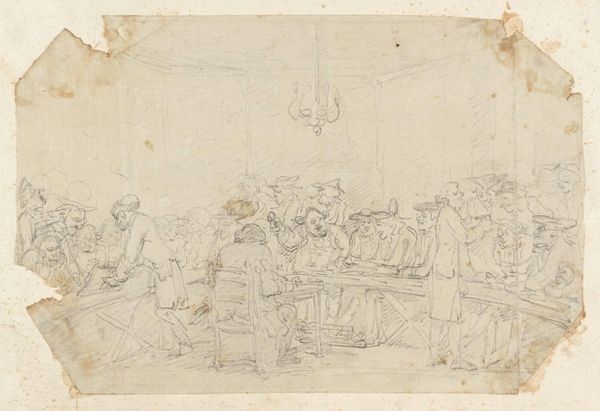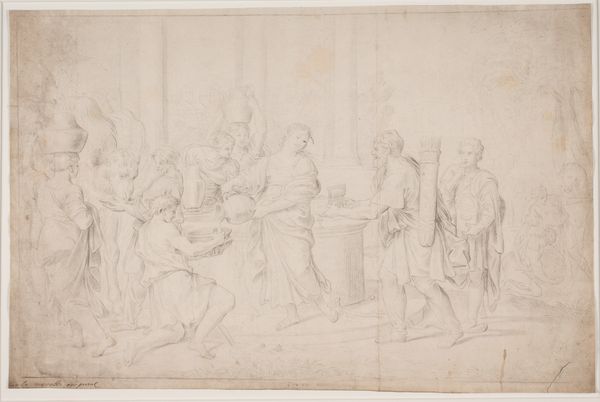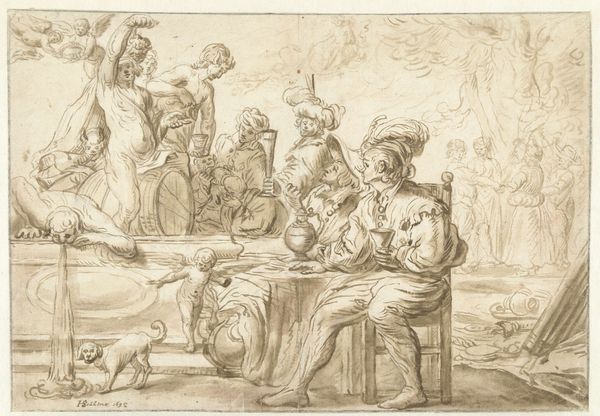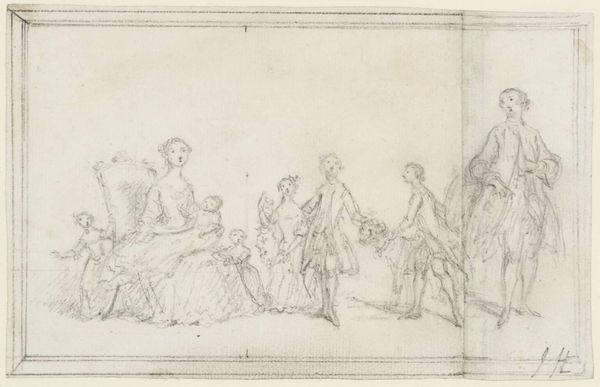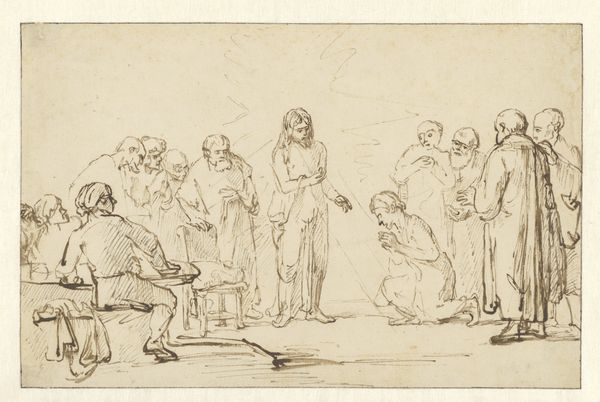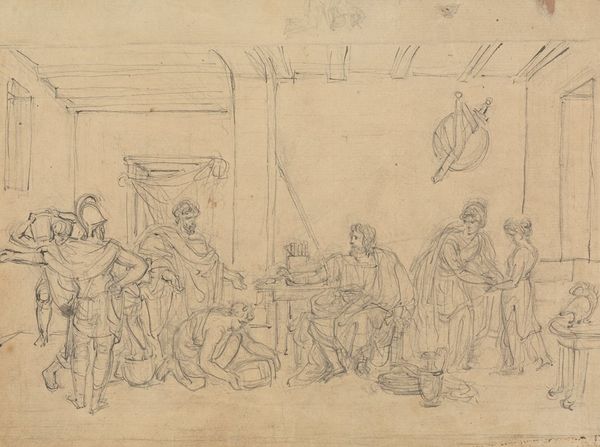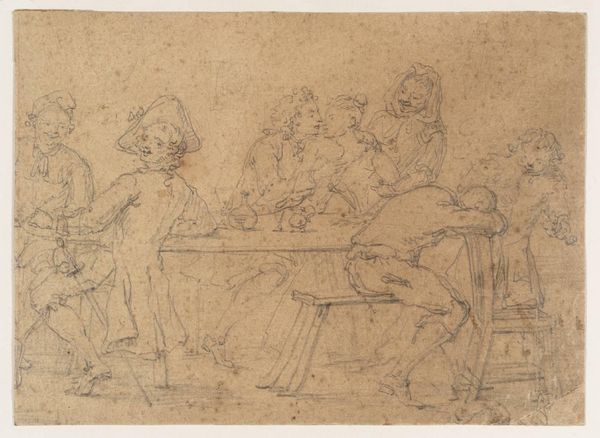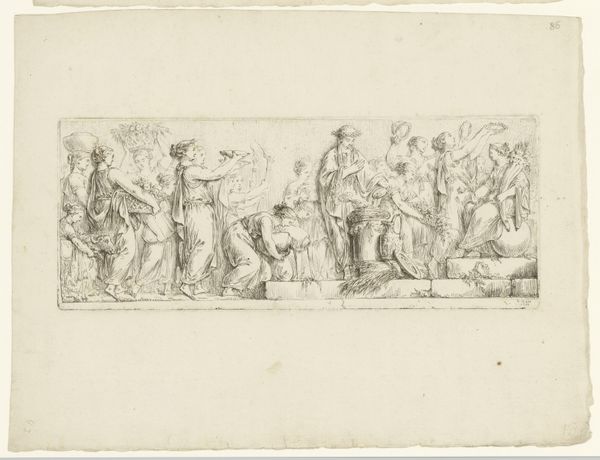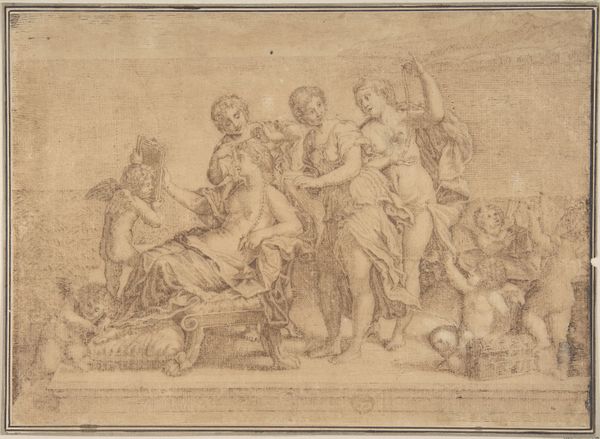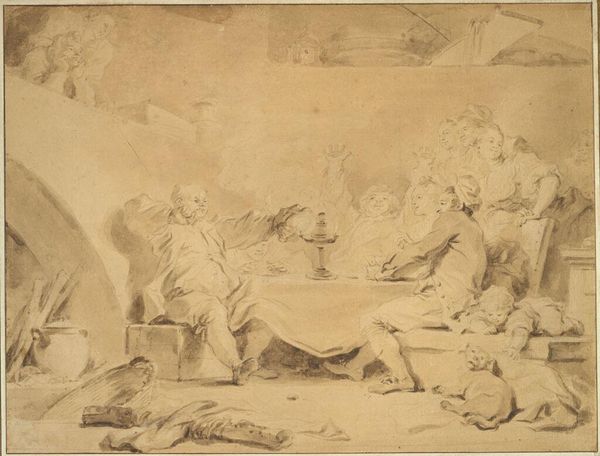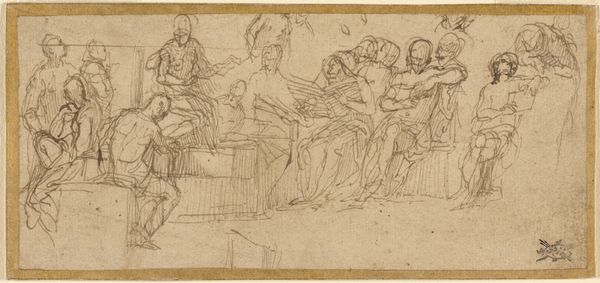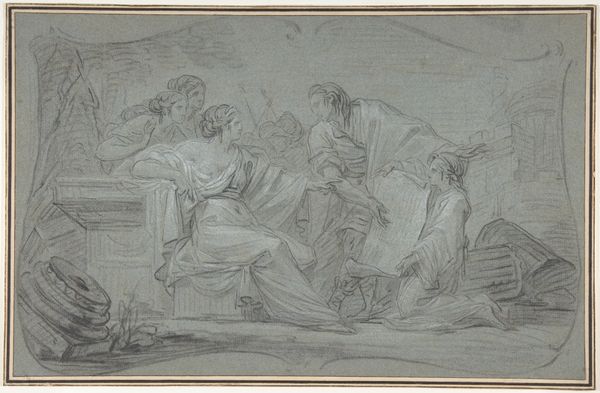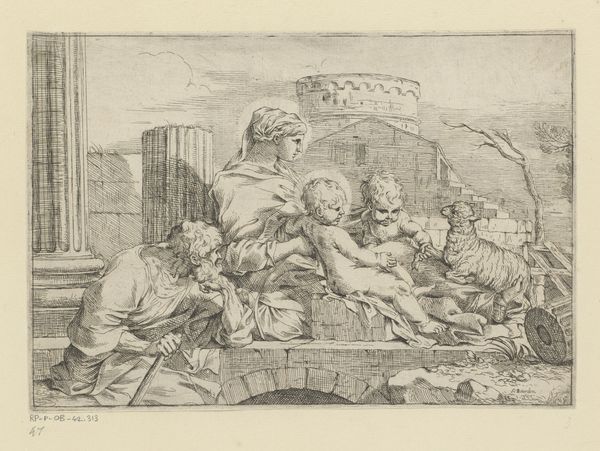
drawing, paper, pencil
#
drawing
#
amateur sketch
#
light pencil work
#
neoclassicism
#
pencil sketch
#
figuration
#
paper
#
personal sketchbook
#
idea generation sketch
#
sketchwork
#
pencil
#
sketchbook drawing
#
pencil work
#
history-painting
#
sketchbook art
#
initial sketch
Dimensions: height 236 mm, width 346 mm
Copyright: Rijks Museum: Open Domain
Curator: Look at this incredibly delicate pencil drawing. It’s called "Laatste Avondmaal," or "Last Supper," dating roughly from 1765 to 1807, attributed to Jan Tersteeg. It’s neoclassical, fitting the era. Editor: My first thought? Ghostly gathering. It’s all suggestion and barely-there lines, like a memory fading or an idea just beginning to form on the page. There’s something melancholic in the air. Curator: That’s apt. Consider the subject: it’s the final meal Jesus shares with his disciples before his crucifixion. That somber mood you pick up on? It’s deeply embedded in the scene’s narrative, magnified here in the fragile lines of this study. It may be rooted in neoclassicism, but this also makes for a study in precarity. Editor: Precarious is the word. The faces aren’t clearly defined. It could be anyone, anywhere, really feeling that dread realization wash over you. It seems very preliminary. Did Tersteeg intend this as a prep piece? Curator: Undoubtedly. The linear precision typical of the neoclassical style, which emphasizes order and rationality, is tempered here by the sketch’s inherent intimacy. You see those slight compositional adjustments in the bottom right corner? These are idea-generating processes at work. He is toying around. Editor: Almost like catching a glimpse into his thought process. It’s interesting how the ethereal quality emphasizes the profound loneliness inherent in that last supper. Jesus knew what was coming, right? This drawing makes that so palpable. There’s no dramatic gesture, no overly theatrical rendering... only quiet reflection. Curator: Exactly. In eschewing the grand drama favored by earlier Renaissance interpretations of the Last Supper, this sketch focuses on psychological depth. Its intimacy pulls us into the quiet horror of what will come to pass. Tersteeg perhaps explores it through the medium and his approach to preliminary rendering, even in its subtle ghostliness, and speaks to the heart. Editor: Makes you think about how the power of art lies just as much in what isn’t there, the unsaid, the ghostly presence, as it does in what's explicitly shown. It’s fascinating. Thanks for sharing the story, Jan. Curator: My pleasure, and yours is certainly an invitation to remember we are but a drawing when considering art through the scope of our history.
Comments
No comments
Be the first to comment and join the conversation on the ultimate creative platform.
